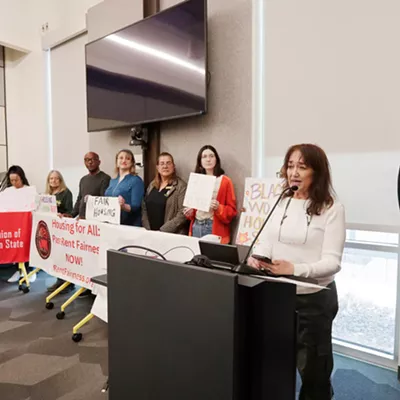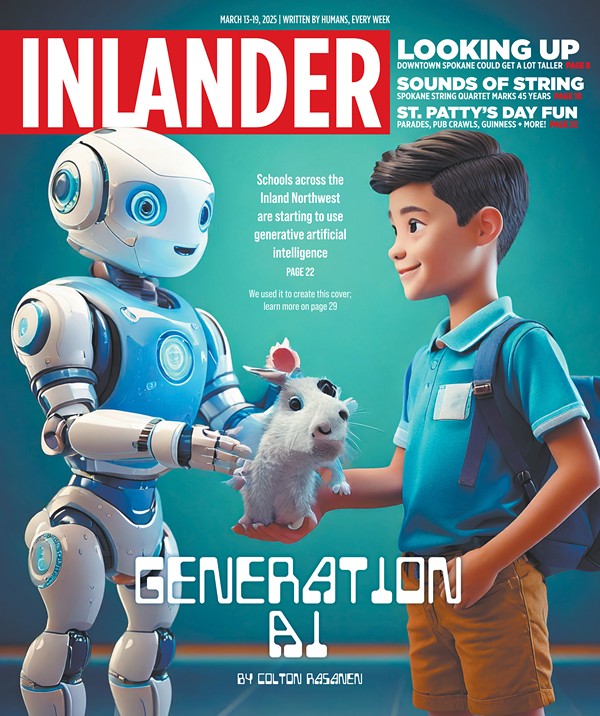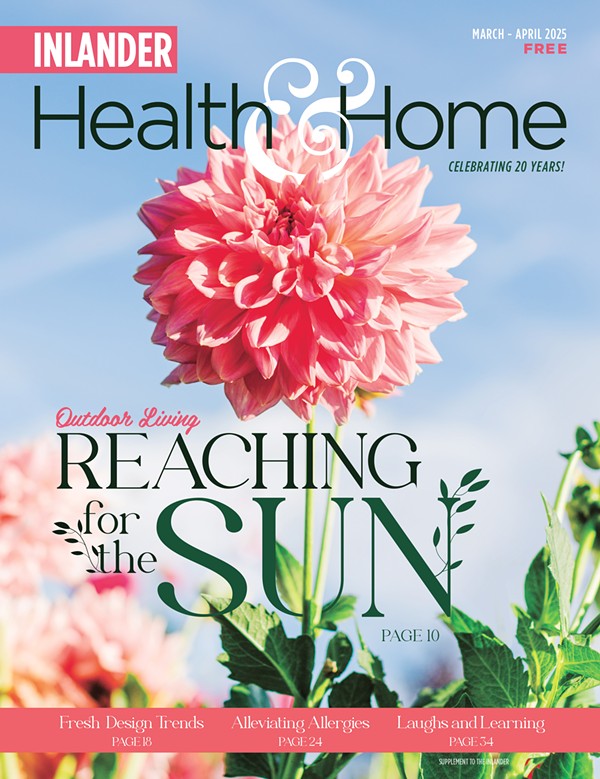Younger Readers the Key for Newspapers
[
{
"name": "Broadstreet - Instory",
"component": "25846487",
"insertPoint": "4",
"requiredCountToDisplay": "4"
},{
"name": "Broadstreet - Empower Local",
"component": "27852456",
"insertPoint": "8",
"requiredCountToDisplay": "8"
},{
"name": "Broadstreet - Instory",
"component": "25846487",
"insertPoint": "12",
"requiredCountToDisplay": "12"
},{
"name": "Broadstreet - Instory - 728x90 / 970x250",
"component": "27852677",
"insertPoint": "18",
"requiredCountToDisplay": "18"
},{
"name": "Broadstreet - Instory",
"component": "25846487",
"insertPoint": "5th",
"startingPoint": "23",
"requiredCountToDisplay": "24",
"maxInsertions": 100
}
]
by JASON NIX & r & & r & & lt;span class= "dropcap " & W & lt;/span & hen 38-year-old Adolph S. Ochs purchased the New York Times in 1896 -- the heyday of yellow journalism -- he decided to bet on the intelligence of his audience. Even though the paper was losing money, he lowered the price from 3 cents to a penny, thus giving him access to a whole new world of readers. His gamble paid off in the long run with a much larger audience, more advertising revenue and a better reputation for serving readers.
Things have changed. In the current era of corporate media ownership, a newspaper's success is measured not in the loyalty of its audience or its long-term profitability but in quarterly profit statements. It's like trying to tell the time by looking at the second hand of a clock.
Media companies now look for the same traits in their editors that restaurants look for in their managers: loyalty to the corporation, acceptance of high staff turnover as inevitable and a willingness to redesign the product in order to make assembly possible with low-skilled workers. While corporate media are desperately hanging on to their aging readerships, those of us younger than 40 are voting with our feet.
Daily newspaper circulation has steadily declined since 1990. Advertising, which accounts for around 75 percent of most media companies' profits, is now split between daily newspapers and emerging, more successful competitors: news-oriented Websites and alt-weekly papers serving younger readers and specialty markets.
Media companies can no longer expect 25 percent to 30 percent profit margins with no spending on innovation. The average margin in 2007 was 16 percent, down from 22.3 percent in 2002.
The corporate response to this has been predictable. Editors have physically cut the sizes of their newspapers (thereby decreasing the "news hole," or space in which local stories can run) and slashed reporting staff. These cuts are beginning to affect local news coverage, and readers are looking elsewhere. Cutting costs will not resuscitate daily newspapers; these companies must engage new audiences.
American journalism's health has always been -- and will be -- determined by audiences and professionals younger than 40. Until media companies accept this fact, their futures look bleak indeed.
& lt;span class= "dropcap " & K & lt;/span & evin Martin, the 41-year-old FCC chairman and former Bush economic policy adviser, believes corporate ownership is the model for solid journalism. He thinks the problem with media companies is not that their products are increasingly irrelevant to a young audience, but that anti-monopoly regulation is keeping them from making enough money.
"If we don't act to improve the health of the industry," Martin wrote in a November New York Times Op-Ed, "we will see newspapers wither and die."
He continues: "Allowing cross-ownership may help to forestall the erosion of local news coverage by enabling companies that own both newspapers and broadcast stations to share some costs."
In a 3-2 split along party lines, the FCC voted in December to ease the 32-year-old ban on media companies owning both a television station and a newspaper in the nation's 20 largest markets. The FCC also granted cross-ownership waivers for media companies in smaller markets, including Gannett and my former employer, Media General.
This will no more lead to better local news coverage than it will make newspapers more profitable. The real problem facing daily newspapers is the same problem facing broadcast television news: an inability to connect with an under-40 audience using outdated tools and an outdated business model. Until media companies engage young audiences on their own terms, no amount of consolidation will help.
Here's what they need to know about us:
1. We will never pay for news, especially online. Never. But we do have a high tolerance for advertising. Web 2.0 applications are all chock-full of ads, yet we don't mind as long as access is free. In 2008, asking us to produce two quarters to unlock a newspaper from a metal box or pay to access a news Website is absurd.
2. We don't want an actual newspaper every single day. We get our breaking news online. Give us a well-designed, in-depth print weekly we can read over the weekend when we have more time.
3. We don't go to the local paper for national news. Other outlets do it better. What they can't do is give us context for local stories. Have reporters stick with a story long enough to explain how it will affect our daily lives.
4. Innovate. The newspaper industry has always rewarded those who invested in good reporting and innovation. Over the long run, finding unique ways to present information will pay larger dividends than cutting costs. But this doesn't mean video of car accidents. Think This American Life storytelling, not shallow evening news.
5. Stop worrying about offending people. Any policy that forbids lifestyle columnists from voicing heartfelt political opinions leads to bland, passionless and not very funny writing. Jon Stewart understands this. As long as you expect your writers to appeal to everybody, your paper will be lame.
6. Don't give up on us. If we're not reading, it's not because of apathy. We realize that the health of American democracy depends on good journalism. Give us a good product, our way, and we'll be there.
Jason Nix, a former newspaper reporter and columnist, teaches journalism and writing at Spokane Falls Community College.
Things have changed. In the current era of corporate media ownership, a newspaper's success is measured not in the loyalty of its audience or its long-term profitability but in quarterly profit statements. It's like trying to tell the time by looking at the second hand of a clock.
Media companies now look for the same traits in their editors that restaurants look for in their managers: loyalty to the corporation, acceptance of high staff turnover as inevitable and a willingness to redesign the product in order to make assembly possible with low-skilled workers. While corporate media are desperately hanging on to their aging readerships, those of us younger than 40 are voting with our feet.
Daily newspaper circulation has steadily declined since 1990. Advertising, which accounts for around 75 percent of most media companies' profits, is now split between daily newspapers and emerging, more successful competitors: news-oriented Websites and alt-weekly papers serving younger readers and specialty markets.
Media companies can no longer expect 25 percent to 30 percent profit margins with no spending on innovation. The average margin in 2007 was 16 percent, down from 22.3 percent in 2002.
The corporate response to this has been predictable. Editors have physically cut the sizes of their newspapers (thereby decreasing the "news hole," or space in which local stories can run) and slashed reporting staff. These cuts are beginning to affect local news coverage, and readers are looking elsewhere. Cutting costs will not resuscitate daily newspapers; these companies must engage new audiences.
American journalism's health has always been -- and will be -- determined by audiences and professionals younger than 40. Until media companies accept this fact, their futures look bleak indeed.
& lt;span class= "dropcap " & K & lt;/span & evin Martin, the 41-year-old FCC chairman and former Bush economic policy adviser, believes corporate ownership is the model for solid journalism. He thinks the problem with media companies is not that their products are increasingly irrelevant to a young audience, but that anti-monopoly regulation is keeping them from making enough money.
"If we don't act to improve the health of the industry," Martin wrote in a November New York Times Op-Ed, "we will see newspapers wither and die."
He continues: "Allowing cross-ownership may help to forestall the erosion of local news coverage by enabling companies that own both newspapers and broadcast stations to share some costs."
In a 3-2 split along party lines, the FCC voted in December to ease the 32-year-old ban on media companies owning both a television station and a newspaper in the nation's 20 largest markets. The FCC also granted cross-ownership waivers for media companies in smaller markets, including Gannett and my former employer, Media General.
This will no more lead to better local news coverage than it will make newspapers more profitable. The real problem facing daily newspapers is the same problem facing broadcast television news: an inability to connect with an under-40 audience using outdated tools and an outdated business model. Until media companies engage young audiences on their own terms, no amount of consolidation will help.
Here's what they need to know about us:
1. We will never pay for news, especially online. Never. But we do have a high tolerance for advertising. Web 2.0 applications are all chock-full of ads, yet we don't mind as long as access is free. In 2008, asking us to produce two quarters to unlock a newspaper from a metal box or pay to access a news Website is absurd.
2. We don't want an actual newspaper every single day. We get our breaking news online. Give us a well-designed, in-depth print weekly we can read over the weekend when we have more time.
3. We don't go to the local paper for national news. Other outlets do it better. What they can't do is give us context for local stories. Have reporters stick with a story long enough to explain how it will affect our daily lives.
4. Innovate. The newspaper industry has always rewarded those who invested in good reporting and innovation. Over the long run, finding unique ways to present information will pay larger dividends than cutting costs. But this doesn't mean video of car accidents. Think This American Life storytelling, not shallow evening news.
5. Stop worrying about offending people. Any policy that forbids lifestyle columnists from voicing heartfelt political opinions leads to bland, passionless and not very funny writing. Jon Stewart understands this. As long as you expect your writers to appeal to everybody, your paper will be lame.
6. Don't give up on us. If we're not reading, it's not because of apathy. We realize that the health of American democracy depends on good journalism. Give us a good product, our way, and we'll be there.
Jason Nix, a former newspaper reporter and columnist, teaches journalism and writing at Spokane Falls Community College.
















